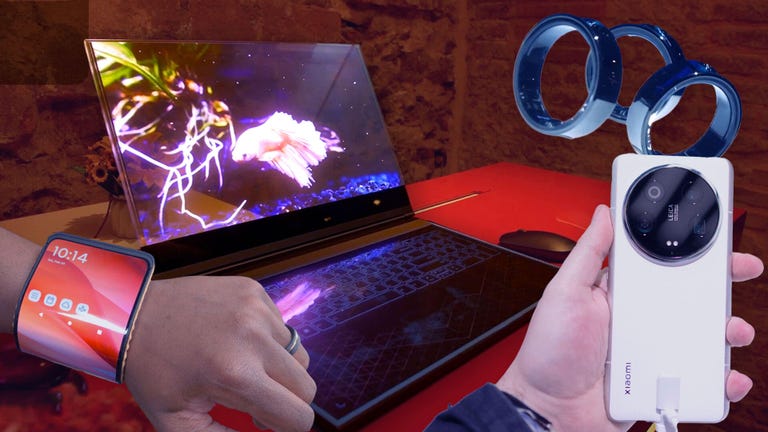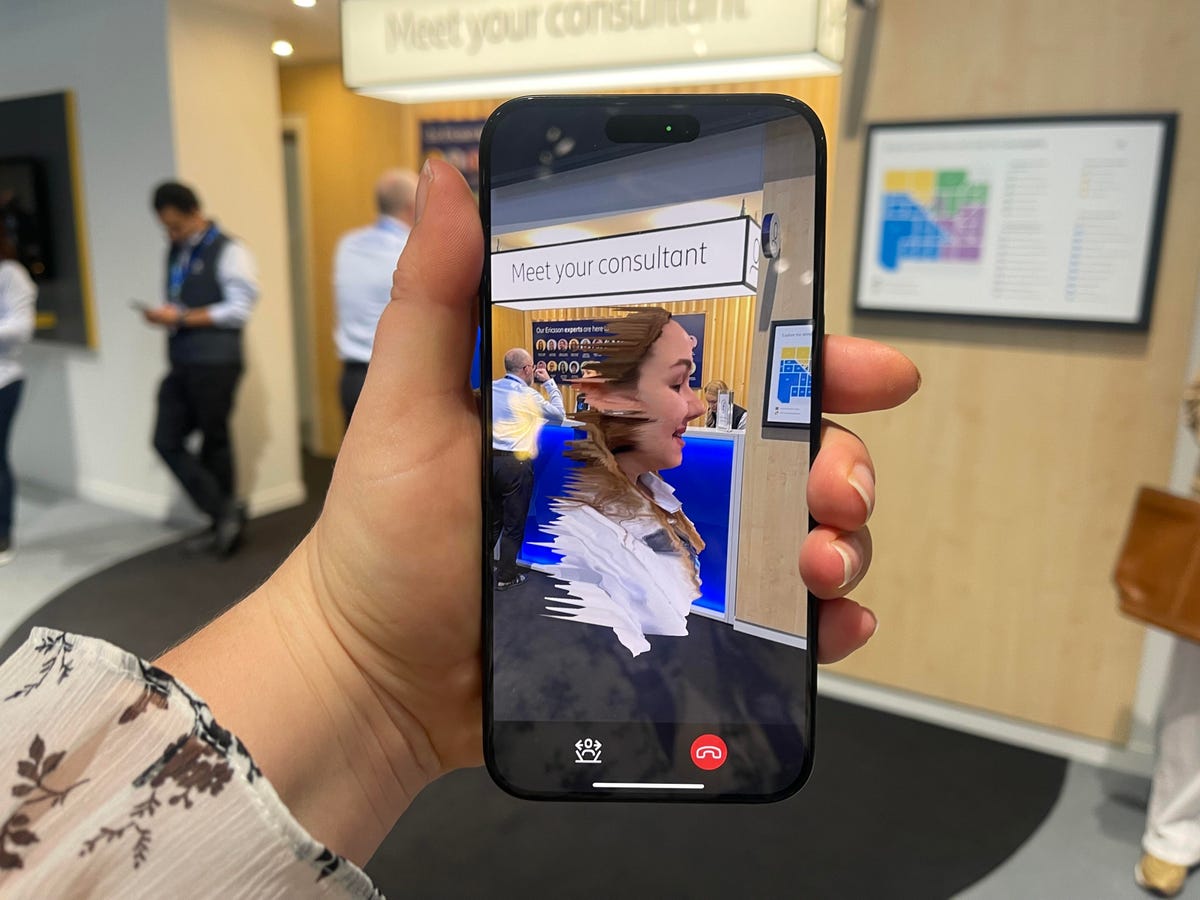Not so long ago, video calling your friends and family on the other side of the world with great ease and little expense was a pipe dream. Now it’s our everyday reality. On the horizon is a new technology built to upgrade video calls by bringing the people on the other end into the room with us in the form of holograms.
Holograms, and the ability to project them across time and space, already exist, but they usually rely on clunky and expensive equipment that most people wouldn’t want to own and couldn’t afford to. Earlier this month at the MWC show in Barcelona, I encountered new technology that makes hologram video calls possible without any of this equipment, thanks to work being done within Finnish network company Ericsson.
A few meters from me, Natalya Tyudina, co-founder and CTO of Ericsson Holographic Communications, is standing in front of a simple iPhone camera, which is pointing at her face. I have my back to her and yet, on the iPhone I’m holding, I see her entire head and shoulders in full 3D on my own screen. I replace the iPhone with a pair of Xreal AR glasses, and as I move to view Tyudina from different angles, she remains in place, albeit laughing at the surprised face I find myself pulling.
We talked just as if we were on FaceTime or Zoom.
Tyudina and her colleagues are using the iPhone’s camera and the same depth sensor the phone uses for Face ID to scan and then re-create a dense, accurate representation of her head using approximately 1 million 3D data points. It’s part of a project that started four years ago in a hackathon, but has now scaled up to be one of the success stories of Ericsson’s internal tech incubator, Ericsson One.


The tech still has its limitations.
Holograms have their limitations
As I walk around Tyudina, I can see her fully in profile. I approach the back of her head, and the illusion begins to break apart into wisps of what should be her hair. This is where the tech hits its limit — for now. She believes advances in camera and AI technology will ensure that these blanks are filled in.
Ekudden also emphasizes that there will need to be improvements in other areas of tech before holograms go mass-market. Bit rates for holographic communication are almost 10 times higher than standard video, says Ekudden. This means low-latency 5G networks, and for mass rollout, additional capacity to handle the load.
Likewise, he sees earning people’s trust in the technology as key to widespread rollout. “Here is one reason why it will not happen overnight — because there has to be an education part, there has to be a socialization part,” he said.
Realistically, Tyudina believes we’re still more than five years away from mass adoption of holograms, even though, as I can see for myself, it does work right now. As with many technologies, holograms will be used first in industry — Ericsson is already talking about using it for remote power line inspections — before becoming more universally available as the price drops.
The pandemic taught us about the limitations of video when it comes to performing interactive work remotely, said Ekudden. Holograms, though, will allow people to interact with each other in much more immersive ways, he added. Ekudden also sees the technology becoming pervasive in the entertainment space, allowing remote attendance of music and sporting events.
In one shopping demonstration, Tyudina shows me how it’s possible to interact with holograms of objects I may want to buy. Simply through gestures, I’m able to reach out and pull a shoe closer to me, as well as turn it around to examine it from different angles.
But overall, she’s most excited for the impact of holograms on the communication we rely on every day. “I would love to use this technology to be able to contact my sister, my parents and be able to have this in-person experience,” she said.
I think of my niece and nephew who live on another continent and I can’t help but agree. It seems inevitable that, bouncy as they are, our time together would be much more fulfilling for them if I could be with them in the room as they played. Getting them to wear augmented reality glasses might prove a challenge — but that’s one for another day.


